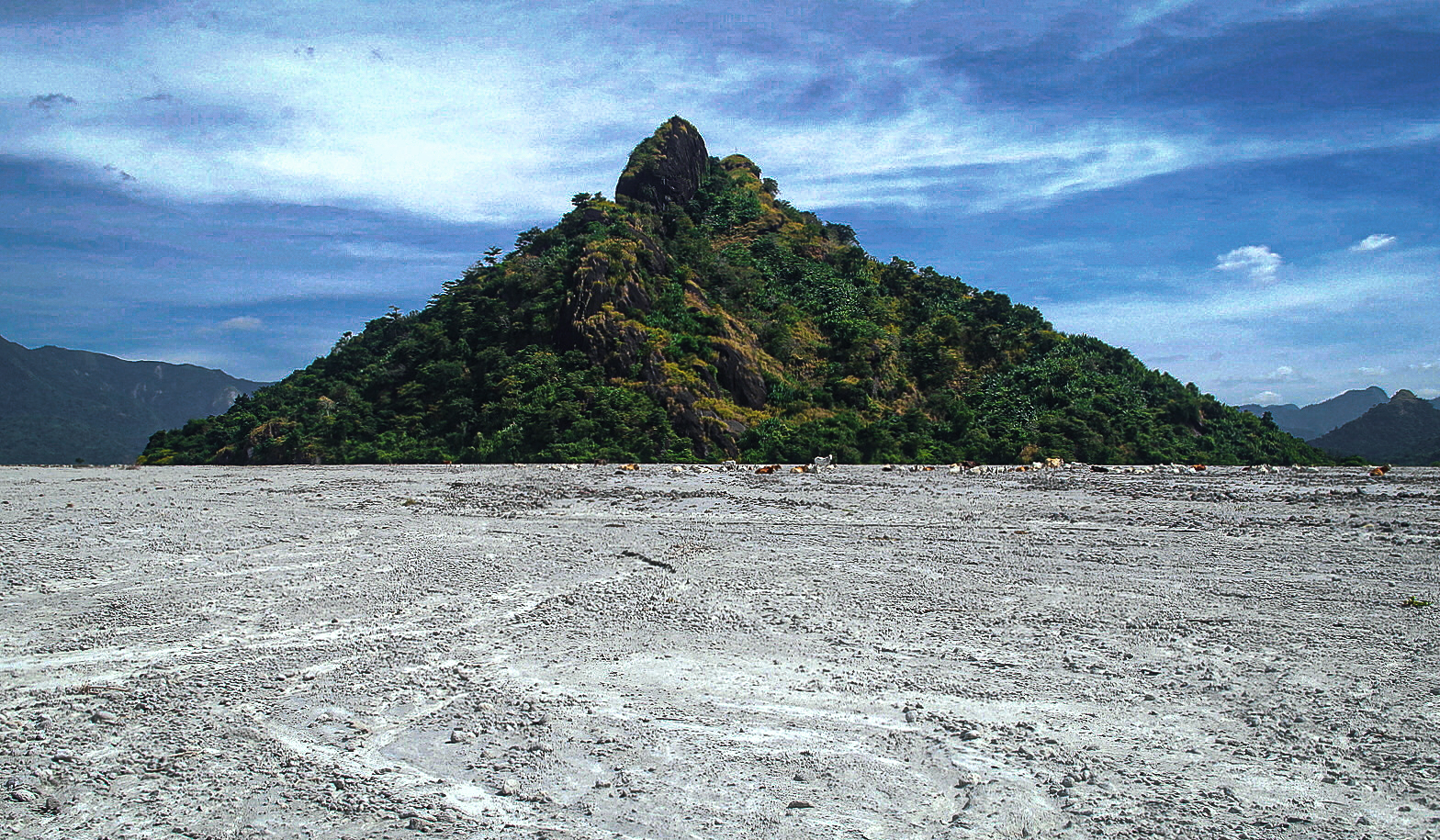One bustling Friday in January, fueled by a celebratory, hello-2020 mood, we set out for Mt. Pimmayong in San Marcelino, Zambales with a few friends. Upon arrival at Barangay Sta. Fe, however, we encountered some local regulatory challenges and were instead directed by officials to Mt. Bagang – a little-known mountain a few minutes away.
Mt. Bagang in reality, looks more like a lone, triangular hill lost in the midst of lahar. Little is known about its origins, but what we eventually knew was 1) The heat in Zambales is unforgiving at 7 am and 2) The hike to the summit is quite chill and easy, with summit views that prove to be as rewarding as the journey to the mountain’s base.
The “4×4” ride takes you through a rugged expanse of lahar-filled valleys and plains; grazing cows, and a smattering of grass and agoho trees.
The summit, however, is a different story. Towering at 302 meters, it overlooks the ashen plains and valleys that remain among Zambales signature features post-1991 Mt. Pinatubo eruption. Glistening like snow against sunlight, ash covers all 360 degrees of the land below. Its extent, with only a monolithic rock punctuating its expanse – proof of Mama Nature’s destructive powers – is stunning and overwhelming at once. Nature truly is frightening and beautiful at the same time, and we’re but a speck of dust in this wild, wild world.
Hike specifications: Mt. Bagang, San Marcelino, Zambales
Height: 302 meters (991 feet)
Hike duration: 1 to 1.25 hours to summit; 2.5 hours backtrail max
Features: Banana and local trees and foliage; open grassland and encompassing views of lahar, Mt. Pimmmayong, and Zambales mountain range at the summit.
Rattan: None
Limatik: None
Poison ivy: None
How to get to Mt. Bagang in San Marcelino from Manila
From San Marcelino, you can either rent a kuliglig (P1,200 for up to 10 pax) to Barangay Sta. Fe or take a trike to the lahar crossing in Sta. Fe (P100 for 3 pax), then ask locals around to bring you to the barangay hall in Sta. Fe using a carabao cart (Yes, it’s a real carabao at the helm. P600 for 5 pax)
From Brgy. Sta. Fe, you will need to take a jeepney to the base of the mountain. The jeepney ride takes around 30 minutes or so. It costs P1,200, good for 8-10 persons. The rental covers the trip to the base and from the base to a tricycle terminal where you hire a trike to take you to the highway where Manila-bound buses are found.
How to get to Liwliwa Beach from Mt. Bagang
P250+ – bus from Pasay to San Marcelino/ P500+ RT
P100 – trike for 3 to crossing
P600 – kariton to Barangay Sta.Fe
P1,200 – jeepney ride to and from jumpoff point
P300 to P500 – guideship fee for a group of 5 (no fixed rate, it seems)











